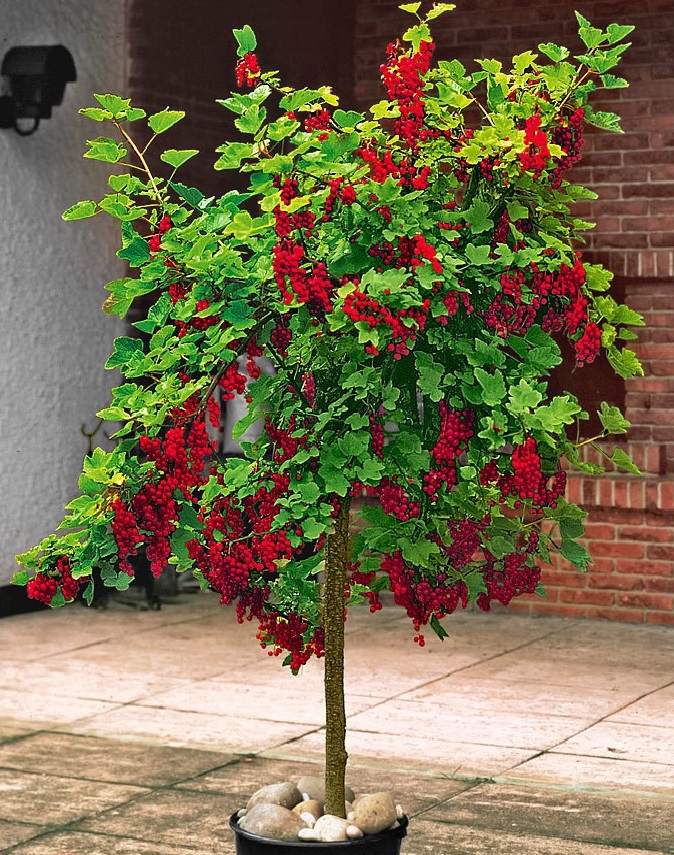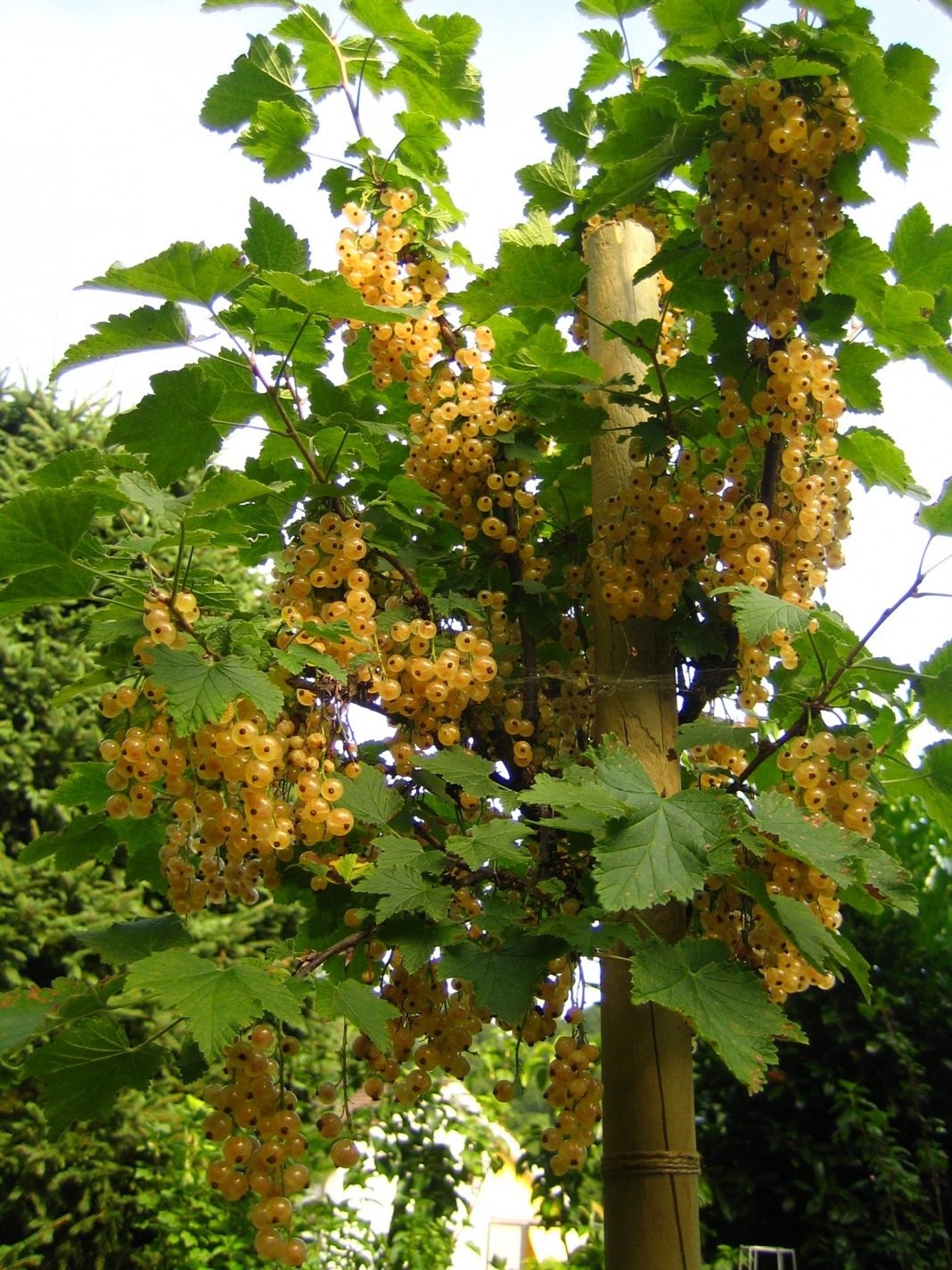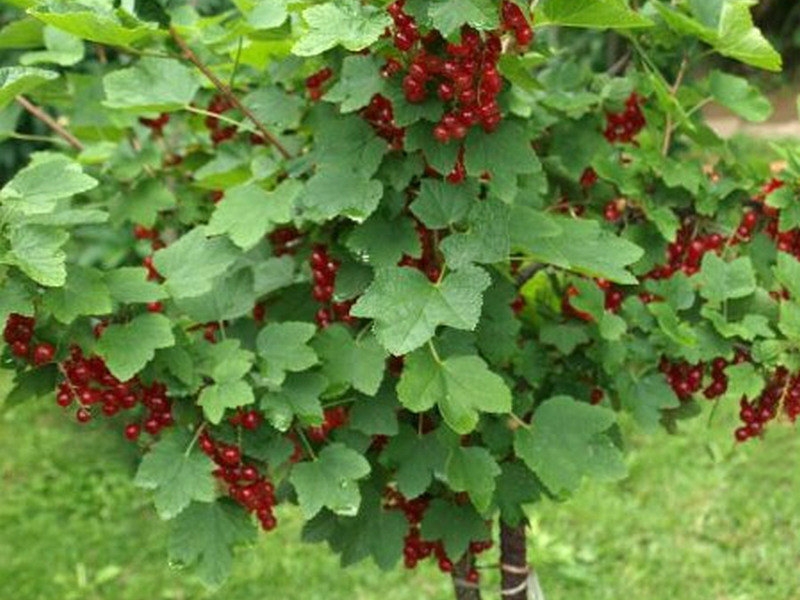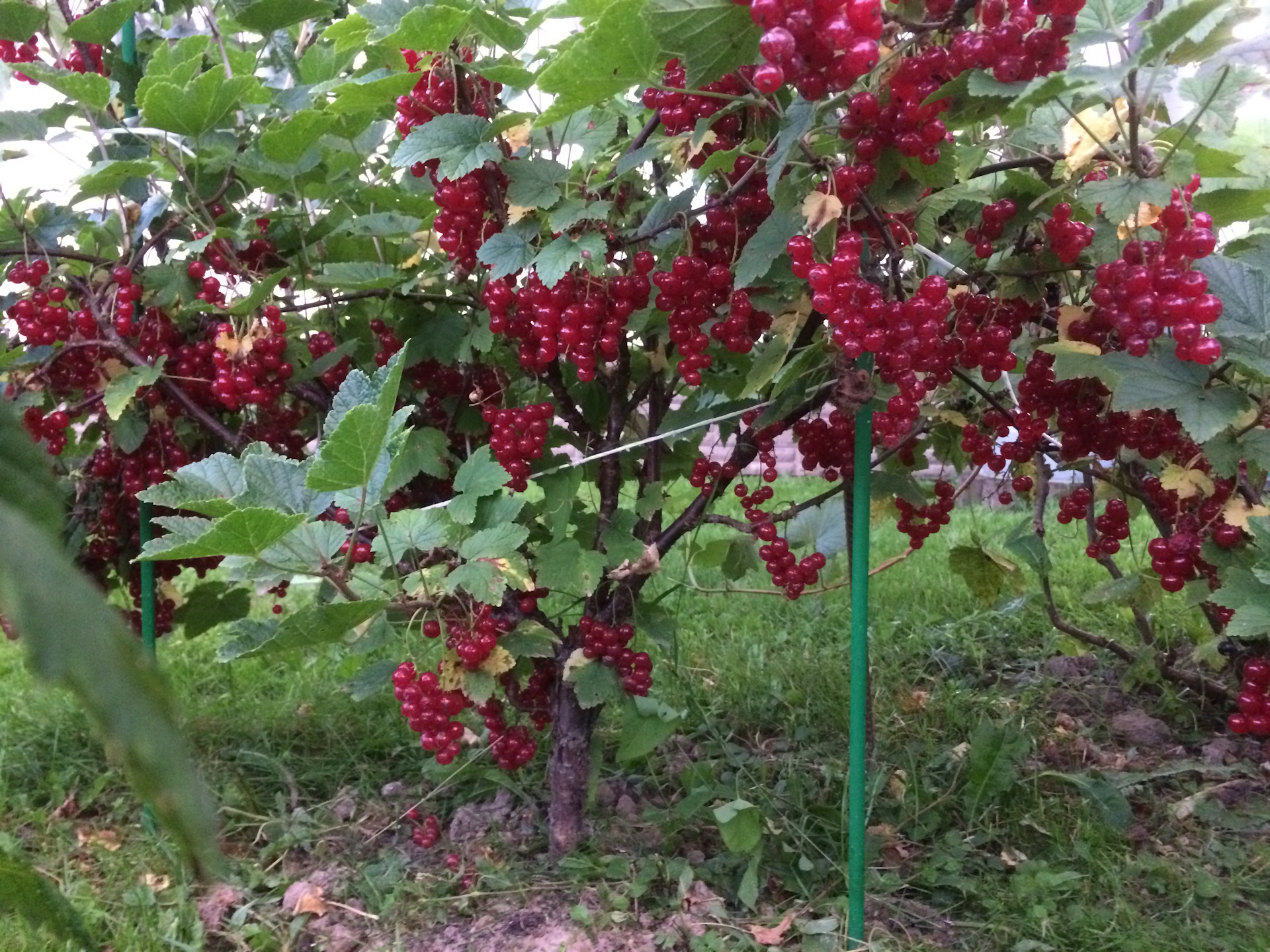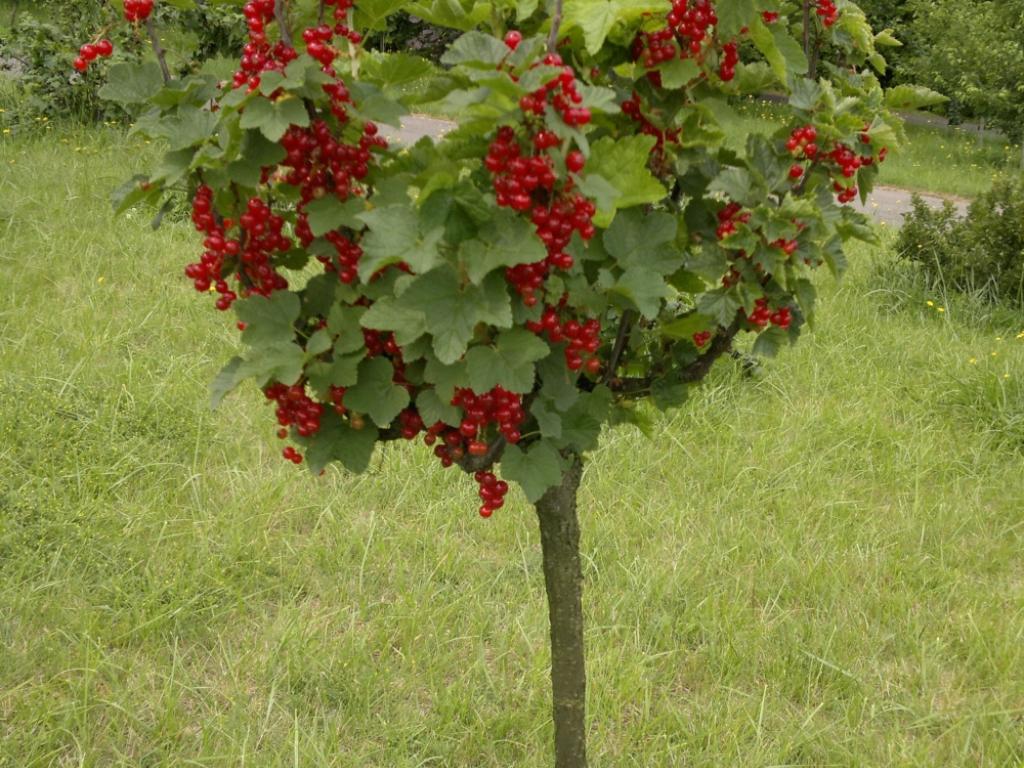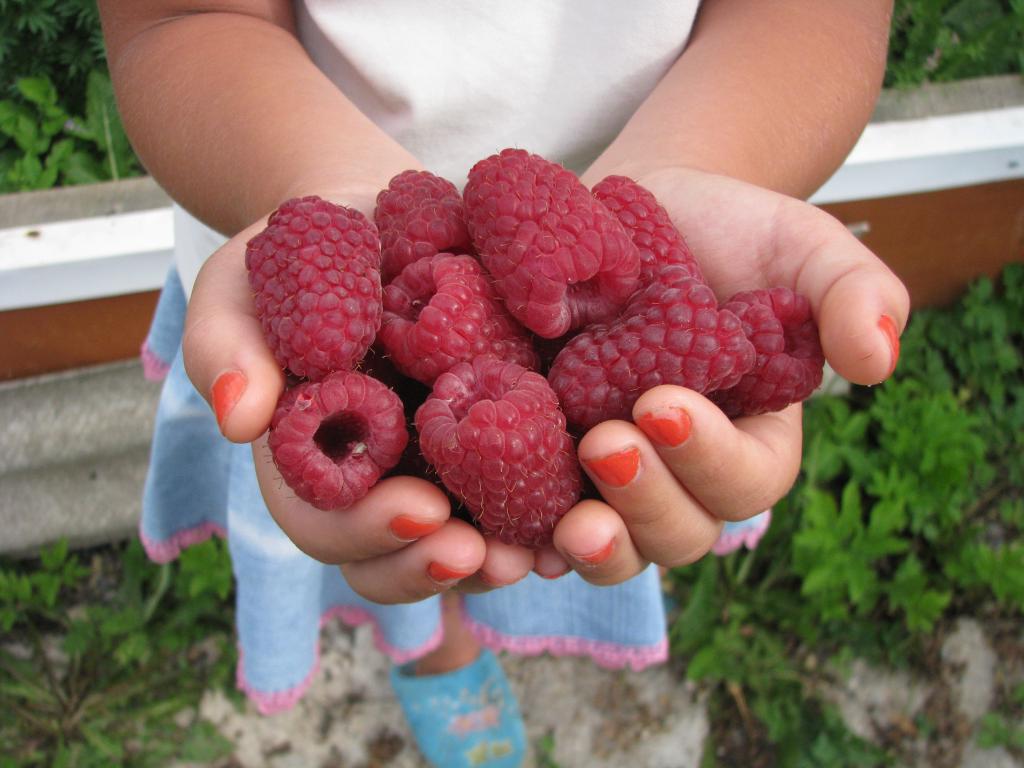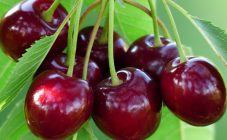Content:
Everyone knows that black and red currants grow in the form of a bush. However, a number of agricultural techniques for the cultivation of currants allow the cutting method to turn a currant bush into a currant tree, how to grow it, you can learn from the material described in this article.
Reasons for tree formation
For currant bushes, excessive growth and all-round spreading of branches are characteristic. When most of them are on the ground, weeding and tillage becomes much more difficult. In addition, the process of picking berries soiled in the ground turns into an unpleasant task. In addition, freshly harvested fruits will have to be washed much longer.
Raising the crown of a currant plant will allow you to get rid of additional cleaning and processing work. The raised branches of currants on the trellis are better illuminated and saturated with oxygen, which has a positive effect on the weight index of yield. Carrying out trimming activities is greatly facilitated. Also, tree currants, especially against the background of ornamental grass or the facade of a residential building, looks very decorative. A knowledgeable gardener is able to try to grow a colored currant tree from cuttings or to plant several currant bushes with a tree with different colors of fruits. The range of colors presented today allows you to choose one of the existing colors:
- white;
- pink;
- green;
- dark cherry;
- black.
A free open space near the trunk is formed around the currant tree. This is the ideal place to plant any plant species with phytoncidal properties. Work on the cultivation of such a crop will slow down the growth of weeds and scare away pests. The time spent on processing activities will be significantly reduced.
If we talk about how many times in a life a tree currant bears fruit, we can say that a currant tree does not lose its ability to bear fruit for 8 years from the moment the shrub is planted in a permanent place. Many gardeners are wondering: for what year does the currant bear fruit after planting. The first crop can be harvested in the third year after formation. Also, when asked what year the currant bushes begin to bear fruit, it should be mentioned that in the absence of proper care, the beginning of the stage when the fruits ripen may come one season later.
Formable grades
Red currants
- Viksne is an early ripe varietal currant resistant to powdery mildew. Rounded berries of dark cherry color with a sweet and sour taste. If the conditions where Viksne currants are grown are favorable, then ripe berries can reach a weight of more than 1 gram;
- Jonker van Tets is an early maturing Western variety that is immune to anthracnose lesions, powdery mildew and spider mites. The weight of round bright red berries with a sweet and sour taste of seeds inside the fruit reaches 1 gram.
White currant
Smolyaninovskaya is a variety that is resistant to cold and drought, as well as to powdery mildew. It is prone to slight anthracnose damage. Often damaged by gall aphid. Medium round white fruits have a sweet and sour taste. A powerful semi-sprawling bush is capable of producing a crop of up to 8 kilograms.
Black currant
Chernavka is a medium-late winter-hardy blackcurrant variety. The semi-spreading black currant shrub is resistant to fungal infections. Large-sized black fruits have a shiny surface, sweet and sour taste.
Greenish yellow
Emerald necklace is a medium-late winter-hardy variety, resistant to powdery mildew and spider mites. Medium-sized light yellow sweet and sour berries have a green tint of the seed part.
Correct fit and shape
Autumn is considered the best horticultural season for growing sprouted currant seedlings. The recommended planting interval between these plantings is one meter. The row spacing, as you can grow a currant in the form of a tree, should be placed, observing a three-meter interval. Each of the boles on which the bush grows must be tied to a firmly reinforced stake. The first step in forming a “tree” is to fix it at a single point located in the central part of the trunk.
In order for the tree to retain its decorative aesthetic appearance when growing fruitful currants in the country and give an even richer harvest, gardening activities should be periodically carried out to process the crown. With the onset of the second year after planting on a bed, about five of the healthiest main branches are selected from it. The branch located in the center is shortened by an eighth of the germinated part in a year. The remaining branches undergo more substantial pruning, in which the main goal is to shape the crown of the tree into a sphere. With the onset of the next horticultural seasons, 4 annual branches are kept on each of the branches, shortened during regrowth to 24 cm in length. Deformed, cross-fused and not fully developed branches must be removed. With the beginning of the aging phase of the leading branches, the onset of which falls on the fifth year after disembarkation, they should be cut out in the order of becoming unusable. Only a couple of buds should be left to allow the crown part of the tree to replenish with young shoots.
Seven ways to improve your fit
There are 7 secrets to increase the fertility of currants. During the summer horticultural season, the measures for caring for the currant tree do not differ from those that are carried out for the bush form of planting this culture:
- The site within the tree trunk space must be cleared of weeds;
- The land should be thoroughly loosened;
- Carrying out insect treatment consists in preventing the appearance of aphids, spider mites and kidney mites;
- It is also necessary to treat the tree from lesions with powdery mildew, rust and spotting;
- The soil must be kept moist, making additional watering in the sultry heat;
- Conduct activities for fertilizing plantings, which are as follows:
- at the end of the year, 50 grams of ammonium nitrate in combination with 30 grams of superphosphate fertilizer and the same amount of potassium salt should be applied to a 10-centimeter depth under one bush;
- by the beginning of summer, add a mixture of ammonium nitrate and phosphorus dressings.
- Once every three years, fertilize the soil with a 10-kilogram bucket of rotted compost or humus.
List of five wrong actions
There is a step-by-step list, which includes an explanation of 5 mistakes when growing currants, which are made, for the most part, by novice gardeners:
- Insufficient watering leads to a slower development of plantings and a decrease in quality indicators of productivity - the number of fruit ovaries decreases, the size of which will turn out to be small when ripe, and the consistency is dry. With insufficient watering, ripe berries will have an overly dense skin. Irrigation activities should be carried out three times per season. Particular attention should be paid to watering when the shrub is blooming - while the ovaries are blooming, the plant needs abundant watering. The average volume of water required for irrigation of one planting is 4 liters, but this, if necessary, can be increased.
- Refusal from regular feeding work will lead to depletion of the soil, which will deprive it of the ability to supply the necessary chemical compounds to the tree. Useful elements will not be able to continuously enter the plant's body, which will make it impossible for its normal development. To prevent this from happening, at the beginning of summer it is necessary to apply a complex of nitrogen fertilizers, and after harvesting - on the basis of potassium and phosphorus;
- The absence of a mulch layer will lead to drying out of the planting area and increased growth of weeds, which absorb all the beneficial compounds contained in the soil. Refusal to carry out mulching will lead to the loss of most of the yield of currants per hectare. Therefore, at the end of spring, you should mulch the trunk circles with one of the materials suitable for this:
- peat;
- humus;
- straw;
- sawdust;
- cut grass.
- Refusal to carry out pruning will contribute to the thickening of the bushes, overgrowing with unnecessary branches that replace green, capable of breeding and fruiting, shoots, as well as shoots growing towards the surface of the soil. This leads to a decrease in yields to a minimum and frequent diseases;
- Neglect of preventive measures against pests and diseases can lead to a complete loss of crops.
So, after getting acquainted with this material, it became known how to grow currants in the form of a tree and collect a bountiful harvest of this crop. A currant tree is a truly original type of planting on any home or summer cottage garden plot. Despite the relatively short fruiting period, the advantages of such a horticultural solution are its decorative appearance, non-standard breeding method and convenience in harvesting.
